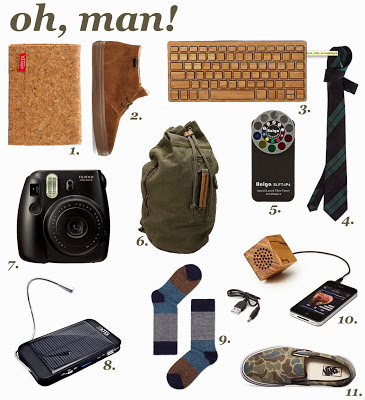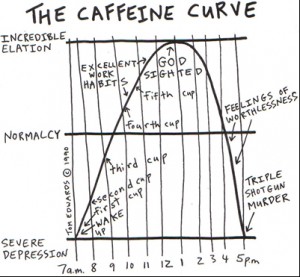You know that feeling you get when you’re driving to the airport and realize you forgot your passport?
I haven’t had that feeling in years. . . . thanks to my father’s travel list and his son’s obsession with lists.
My father traveled a lot for business and made a travel checklist so he wouldn’t forget things. We had fun brainstorming on worthy additions (Rarely subtractions) to the list. It got to the point where he never forgot to pack anything. Now its gone way beyond that and my father would get a kick out of how his list has evolved.
The latest Travel List has been improved over the last 20 years. It now has 300+ items and covers just about every trip imaginable. I’ve recently added items for family, camping, international and kids travel. There’s also some 50 simple tasks to do before and after a trip to make it easier, safer, save money, and put me at ease while traveling.
Beyond Forgetting
Not forgetting things is only the most obvious benefit to using the travel list. Here are some other bene’s:
- Removes mental clutter and maintains focus while packing.
- Makes packing easier, more fun and quicker.
- Reduces the stress of trip preparation.
- Enables packing far in advance of trip.
- Enables light travel while getting more out of items packed.
- Takes the stress out of unexpected trips.
- Enables focus on destination specific details.
- Frees up time to help less prepared family members pack.
- Enables you to delegate trip preparation tasks to family members.
- Enables you to focus on completing nagging projects (not related to your trip) that you want to complete prior to being gone.
- Standardizes your approach to trip preparation.
- Makes you more ready and willing to take spontaneous trips.
- Makes you more likely to travel to places you’ve always wanted to go.
- Sets your mind at ease that all bases are covered at home and work so you can enjoy your trip.
- Minimizes the tasks you’ll need to do upon your return.
That’s a lot of bang to get out of one list!
The list is the focal point for the activity performed around it. The better the list the more effective the activity. This article is about maximizing the effectiveness of both the list and the activities it inspires.

Less is Enough
Space is in short supply when traveling. You pay money for the small space you occupy on the plane, each checked bag, your hotel room, etc.. You also pay dearly in effort and hassle for the weight and size of everything you have to lug around, secure, insure, keep track of and maybe even replace.
If ever there’s an occasion when you need to do more with less its when traveling.
Ironically, the longer your travel list the more comfortable you’ll be in bringing less! Now that anxiety about forgetting travel items is no longer a problem how about leaving things behind on purpose? With more than you could ever need listed out in front of you make informed decisions about what not to take. Come up with techniques and strategies to:
- Use items in multiple ways.
- Find smaller versions.
- Bring disposable items that get thrown away before returning.
- Purchase at a convenience store at the destination.
- Share common items with a travel mate.
- Wash key clothing items at you destination rather than bringing multiple versions.
- Keep a travel bag at a friends house at your destination.
By Air
When traveling by air my goal is to take as few items as possible. Ideally, I don’t even check a bag. That boils down to one small travel backpack (SAK, makes a nice one) and one carry-on bag. The backpack is so small that most people don’t even see it. You’ll be doing me a favor to not refer to it as a man purse.
By Car
When traveling by car I’m a lot more survival oriented and tend to go overboard. Now that my wife and child are in the car I feel more protective. Soon, however, I’ll be able to expertly scale back. My goal is to scale back to less items while improving on utility.
The question is: What is optimal for this trip? Part of that answer is that optimal, when traveling, usually means bringing less.
For the “Don’t Need a List” People
I know who you are. My wife is one of you.
My wife thinks I’m a little nuts with my travel list. “What do you need that thing for?”, she used to say, “It’s all just common sense!”
Now, even my wife asks me to print the list for her when:
- She’s tired.
- She’s busy.
- Her trip comes up suddenly.
- The purpose of her trip changes drastically.
- The trip destination is unusual.
- She has too many non-travel related projects to work on before she leaves!
To put this in perspective you should know that Isabel is an expert traveler by any definition. Her trips are international and usually to multiple countries where knowledge of the language is limited. And, she has a remarkable talent for keeping details in her head. Keeping the same amount of detail in my head would cause goo to drip out of my ears.
Let’s put it this way for all the “Don’t Need a List” people out there: The six reasons that my wife will use a travel list are the best real life example I could ever show to “One of your kind”.
Actually, if you can keep that much detail in your head then think of what you could do with Travel list in front of you! Use that brainpower for more glamorous achievements than packing!
For the Sophisticated
You can always just get in the car and drive with a credit card in your pocket and the shirt on your back. But, how sophisticated is it to extol the benefits of traveling light when you make your first turn and start worrying about all the things you don’t have.
Have fun interrupting the fun parts of your trip to shop at the store for toothpaste (If you can find a store). Or worse, what if your business mission is in jeopardy because your only copy of the presentation is on your secretaries computer. She’d send it to you, but, the server just crashed.
For the Creative
The more basic ingredients you have on hand the less creative you have to be about not having them.
But, guess what? You won’t be less creative. Your creative efforts will just go further because you’ll have more basic ingredients that can be used for things that cannot be anticipated (Think apollo 13 and the carbon monoxide filter they had to build out of raw materials in the capsule).
In other words, just because you may have paper towels doesn’t mean you’ll be using it as a paper towel. It may be used as a coffee filter, dust mask, fire starter or water sponge (Gee how creative you can be when you have things to be creative with.).
Creativity is another form of excess capacity. Just like I say to the people who can store lots of details in their head: Fantastic! Now, how about using that ability for something greater than packing badly.

Most Likely to be Forgotten
- Things in the fridge.
- Vitamins
- Drinks
- Baby bottles
- Wine
- Support materials for incomplete “B” projects.
- Change of plans at last minute changes your needed support materials.
- Cell phone & charger.
- Because you left it charging.
- Because you packed the cell phone too early and forgot about charger.
- Things you don’t have the right container for.
- Information written on pieces of paper scattered around your house.
- Backups and copies of documents you need to perform admin tasks on the road.
- CD’s or DVD left in the drive in your computer
- Project files for any projects to be performed “On the road”.
Sometimes, traveling companions are so disorganized that you spend all your time helping them pack and forget your own stuff. Parents should be especially prepared for this as things they forget have consequences for the entire family. YO Travel List will help you get on top of your own packing to minimize the da mange of sort of thing.
Field Experience
When you start traveling with a list it makes you more aware of which items are truly useful. Since traveling is an extension of living it’s possible to find yourself wanting or needing just about anything. Thankfully, the practical aspects of traveling place natural limits on the infinite items that could make it onto your list. Here’s a few conclusions I’ve drawn through lots of time spent “In the Field”.
- There are many items I rarely use but am still glad to have: Antibiotic cream, compass, many of the survival tin items (Though its surprising how many times I need to use something in the tin), lighter, spare glasses. Even items not used are worthwhile if they remove anxiety or if having them would prevent an emergency.
- Small items are worth taking even if you don’t use them. They prevent late night in-convenience store runs or may be just plain annoying not to have. Think aspirin, tissue, dental floss, lip balm,etc..
- Bring the travel list with you. This is especially useful for unexpected trips. The list enables you to buy stuff at the airport or at your destination. It will also make you aware of exactly what you don’t have that’s important for this unexpected trip.
- Keep your master travel list on your phone AND accessible by internet in a jam.
- I usually need only one book as reading material. If I finish it then it provides an opportunity to read something I normally wouldn’t.
- Reference cards are a great source of reading material. Spanish vocabulary, Knot cards, first aid summaries. Anything I’m interested in studying that might have a laminated summary card is a compact way to learn and travel light.
- DK books are excellent and compact source of all things local to your destination. They have local maps, amenities, hospitals, hotels, restaurants and on and on and on.
- Knowledge of destination leads to less things to pack.
- Knowing people at the destination leads to less things to pack.
- Ability to improvise leads to less things to pack.
- Taking items that perform multiple uses leads to less things to pack (Wave multi-tool, rag, tissue).
- Leave space for purchases in your suitcase. A suitcase 3/4 full provides room for souvenirs.
Do I Have to use Categories?
No, you don’t have to use categories. I used the list without categories for a long time. I only started grouping things into categories when I got married. That’s when things got more complicated and more responsibilities leave less time to prepare.
In case you didn’t notice –the paragraph above is a backdoor recommendation to use categories. Ok, I feel your pain. Please hear me out. Categories:
- Encourage you to store items in your house by usage.
- Make you aware of where things go while packing.
- Make it easier to unpack when you get home
- Make your travel list more visually appealing and easier to work from.
- Get you thinking in terms of space and context rather a bombardment of item after item.
- Encourage you to brainstorm on other items in the same category you might have missed.
- Separate tasks from things on your list making it easier to delegate trip preparation to other family members.
I’ve made my own Optimal choices for categories. I put a key identifier in front of the task or item so they are grouped and sorted at the press of a button. There are lots of options for categories:
- Type of travel
- Place item is kept
- Place item is packed
- Where item is carried
- Usage category
- Activity based
Try mine out and see if you like them. If you don’t its time to experiment with your own. Just make sure the key in front is unique so it sorts and groups well in your word processor.
B – Before Packing
Almost all my “Packing” time is spent working on what I call “B” items. “B” stands for “Before Leaving”. They are tasks or projects –not items to pack. Many of them relate to the trip, however, most of my efforts go towards projects I want to get done before leaving. These fall into three categories:
- Projects that must be completed before leaving.
- Projects I want to be completed to feel better about leaving.
- Projects much easier completed now than when I return.
Work on all three categories make the trip more stress free and relaxing.
“B” items are the true “Work” of traveling. Taken all together, they are the real reason people dread (Avoid, postpone, Never get around to) traveling. They are also the most under appreciated and complex part of leaving the house. Smoothing out this phase of trip preparation will go a long way towards making you want to travel, again.
Strangely, I hear comments from friends that “It takes you a long time to pack”. That’s because I refer to any work on “B” projects as “Packing” to minimize interruptions leading up to departure. After my friends read this article that trick will no longer work for me. But, it will still work for you so give it a try.
Travel is a great excuse to impose deadlines on nagging projects. As any writer will tell you “Deadlines” don’t kill you when you cross them. They’re more likely to set you free.
Packing Tidbits
It’s best to check an item off your list only when it is:
- Placed into a bag that won’t be left behind.
- Put in the car (For car trips only).
- Put into the pockets of the clothes you’ll be wearing when you leave.
- On your key ring.
- In your pocket survival tin.
- “Done” if its a task or project.
- Work off one list only!
- Consider a bag full when it’s 3/4’s full. That will make items easier to retrieve and leave space for souvenirs.
- Place packed bags by the door or in the car.
- Pack car trip bags for easy retrieval of commonly needed items on the road.
- While packing the car for a road trip create a ‘cockpit’ around driver to make things easy to retrieve safely while driving without having to pull over and stop.
- Add any new items or tasks you thought of while packing to your master travel list. If you think of them while traveling e-mail or leave a phone msg to yourself to add later.
Gentleman’s Travel CheckList
Instructions
The list is the simplest component of travel preparation. Although the Travel List is the result of years of brainstorming –how you use the list is more important than the list, itself.
Once you get it down the list prep will take only 5 minutes. The rest of the time will be spent packing or getting non-travel related projects done before your trip. Don’t be put off by the detail in the steps. I have to be specific for those going through the process for the first time.
- Paste the whole list into word
- Change categories, if necessary, but keep each prefix unique.
- Consolidate all lists for this trip into this list
- Categorize any new items added.
- Use Word to Sort the entire list by Alphanumeric A-Z (Which will group all categories together).
- Now, delete all items not applicable for this trip (Which will probably cut list in half).
- Going through the list probably made you think of destination specific items. Add these items to the list while they’re fresh on your mind.
- Going through the list probably made you think of things you have to do before leaving. Add these tasks/projects to the list with a “B” prefix.
- If any items you thought of in 7. or 8. are general items then add them to your master travel list for the next trip.
- Delegate any “B” items that could possibly be better accomplished by someone else. Change any delegated items to “BD”.
- Go through list again and delete items not needed for this trip.
- You list is probably much shorter now. Using Word, select all and then format the list into two or three columns with a goal of getting all remaining items on one page.
- Print out the resulting list. If greater than one page then print on both sides so entire list is on one sheet of paper.
- Keep that one sheet of paper with you while you run errands. Check items off list as they get done. Consider giving a copy to family members with their delegated items. Add any general items you think of to this list and transfer to master list for next trip.
Last, but, not least my father would be disappointed if I didn’t leave you with his favorite travel tip. While your walking out the door leave one bag behind!





